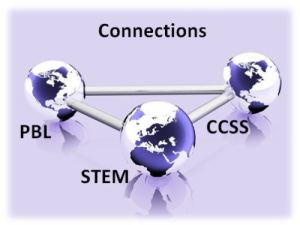
Welcome back, anti CCSS Warriors, for Part 2 of my “STEM to STEaM: Ties to CCSS” article. In yesterday’s portion, you got the basic foundation of how STEM and Common Core became united. Today, we’ll dive into the “STEaM” portion of the mix. If you recall, we were using the analogy of a vehicle (CCSS), a driver (STEM), and the gas (STEaM) in our ‘engine’ yesterday. I’d like to continue to use that analogy.
The Gas, “STEaM”:
In closing yesterday’s article, I left you with the concept that no overreach from the federal level of government into education is proper. In order for the current p3 led overreach (aka: ‘Common Core’) to succeed, it’s going to need a lot of fuel..a propellant of sorts to keep the momentum up. While we’ve seen some of those new propellants pop us (Next Gen Science, C3 Civics, and others), none is as welcome (or needed) for STEM to carry on it’s ‘STEM citizenry’ than ‘STEaM’. As I shared yesterday, ‘STEaM’ is “Science, Technology, Engineering, the Arts, and Math”. The CCSS Machine has even cranked out a catchy phrase for the ‘gas’. “STEM to STEaM”. Who’s on board? Ahh…we’ll soon find out.
More STEaM, Less Americana:
Using the same PCAST Sept. 2010 Report from yesterday’s portion in this series, take a minute to look back at the 5 main agenda points. Using those 5 points, STEaM is the newest angle in the ‘national standards’ movement in American education. In our recent past, there’s been a “STEM to STEaM” movement which has involved not only a post-secondary school acting as headquarters for the movement, but U.S. Congress members, corporations, and elementary, secondary schools chiming in as well. Caucuses have formed in Washington, D.C. to seek federal funding for this newest ‘college and career readiness’ power. The post-secondary school wasting no time in being a cheerleader for the nation about “STEM to STEaM? Rhode Island’s School of Design.
( see: http://stemtosteam.org/about/ ) *Note: when I first learned about STEM to STEaM, it was spelled as I’ve been spelling it: where only the “a” is lower case, however, it appears that even that has been changed so that all the letters are now upper case. I’ll do my best to reflect this makeover from here forward.
According to “STEAM’s” website, our 21st century economy depends on it (Steam, that is).
Here’s their description, “In this climate of economic uncertainty, America is once again turning to innovation as the way to ensure a prosperous future. Yet innovation remains tightly coupled with Science, Technology, Engineering and Math – the STEM subjects. Art + Design are poised to transform our economy in the 21st century just as science and technology did in the last century. We need to add Art + Design to the equation — to transform STEM into STEAM. STEM + Art = STEAM STEAM is a movement championed by Rhode Island School of Design (RISD) and widely adopted by institutions, corporations and individuals. The objectives of the STEAM movement are to: transform research policy to place Art + Design at the center of STEM; encourage integration of Art + Design in K–20 education; and influence employers to hire artists and designers to drive innovation.”
Pause here for a moment and ponder how this fits with those 5 main agenda points in STEM. Refer back to the pages around 12 in the PCAST Report where it’s revealed that in order for the 5 agenda items to thrive, the need to embed them in Common Core had to be met. Now, let’s proceed, shall we?
June 2014:
For the STEAM folks, this is an important month. Why? It was in this month that a group from the NAfME (National Association for Music Education) went to Washington, D.C. for a Congressional event. Two days of “music in the 21st Century STEaM education” was held. As per the press release, 63 Congressional members were ‘on board’ with the concept. The goal? A better prepared 21st Century workforce population. Here’s the excerpt:
“Supported by Congresswoman Suzanne Bonamici (OR) and Congressman Aaron Schock (IL), since its creation in 2013, the bipartisan Congressional STEAM Caucus has grown to include 63 members of Congress. The STEAM movement focuses on the inclusion of the arts in Science, Technology, Engineering, and Math (STEM) curricula, as the arts play a unique and critical role in helping students develop the kind of innovative and creative skills that they will need to succeed in the 21st-century workforce.” This was followed by NAfME’s purpose for being involved, “NAfME’s objective for the briefing is to explore the role of music in STEAM curricula, and to discuss how music helps students develop the workforce skills they will need to succeed after completing their studies.” To see the entire press release, http://www.nafme.org/press-release-nafme-congressional-briefing-explore-the-role-of-music-in-a-21st-century-steam-education/
Here’s a You Tube video of one of the NAfME’s Congressional Briefings. It’s from 2014. It is related to the press release above. Why I’m including it is due to the content. In this video you’ll see and hear how the STEAM curricula (was at that point) still being developed. You’ll notice that in this arena, STEAM standards were still being fleshed out. But, you’ll want to note when and where in the video the efforts to make everything align to the current ‘common’ standards in place. The briefing is just one of the instances to seek more government funding (via research grants) to have music cause education to dig deeper and wider. Much of the very same CCSS language we’ve heard will be used in the STEM/STEAM presentation. All have the same goal: Orchestrated student lifetime success. To pull all this off, we’ll need MORE STEM/STEAM teachers (think of those 5 original goals). Note how only STEAM teachers will be able to teach STEAM topics. (does this sound familiar?) Expect to hear how data will follow the students (just like CCSS, STEM, Workforce). Oh, be sure you note what CCSS supportive corporation is also present at this briefing.
Simply put, all this is a bridge to connect one education reform aspect to another. And, it’s one the government is heavily banking on that we’ll embrace.
[youtube https://www.youtube.com/watch?v=rLDn65rRvbw&w=560&h=315]
Related Sources:
A related resource you may like: NAfME’s call for aligning teachers to the (then) new CCSS aligned Art Standards: http://www.nafme.org/coalition-launches-call-for-benchmarking-teachers/
Another related resource: NAfME’s Congressional attention getting “Bubbles” CCSS aligned program.
See: http://www.nafme.org/teachers-spoke-nafme-listened-congress-got-the-message/
*Note: I bring up these both, as I’ve written on both of them in a previously published article. I detailed for you HOW aligned to Common Core they both the Art Standards and the “Bubbles” are. Both are included in the published post from Feb. of this year. See: https://www.commoncorediva.com/2015/02/15/rmt-ccss-hits-the-sour-notes/
Closing:
In the third portion, I’ll be showing you that STEAM is much older than it appears. How STEM has even more up its sleeve for America. It is my hope you’ll be able to see just how encompassing all this is and what it means not only for education, but for our country.

8 thoughts on “Tech Thursday: Pt. 2 STEM to STEaM’s Ties to Common Core”